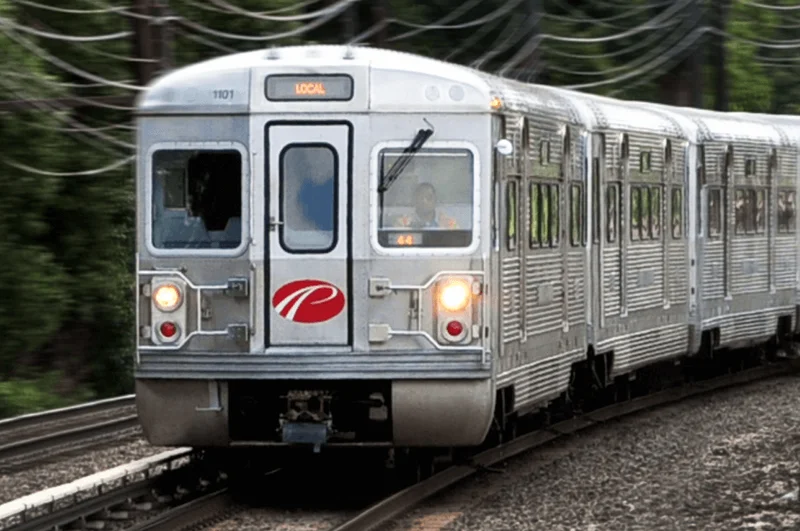The Three-Hour Blackout That Revealed the Secret Heart of Our Cities
It’s 7:40 a.m. on a Wednesday. Imagine standing on a PATCO platform, the air still cool with the remnants of night. You’re checking your phone, mentally running through your morning meetings, surrounded by the familiar hum of a city waking up. Then, a sudden, unnerving silence. The destination boards flicker and die. The low thrum of the third rail vanishes. For a few seconds, there’s just the confused shuffling of feet and a collective, unspoken question hanging in the air.
This was the reality for thousands of commuters on October 15th, when the entire PATCO line connecting Southern New Jersey and Philadelphia went dark. The official cause was mundane, almost laughably small: a power surge from the grid provider, PSE&G, that blew several fuses at the Westmont substation. A few tiny, forgotten pieces of hardware failed, and a major metropolitan artery was instantly severed.
Most news reports framed this as a story of commuter frustration, of a system failing. And they aren't wrong. But reports like Power problem shuts down PATCO service between N.J. and Philly are missing the real story. I believe what happened that morning wasn't just a failure; it was a gift. It was a live, unplanned stress test that gave us a breathtakingly clear snapshot of the two futures our cities are facing: one of brittle fragility, and another of profound, human-centric resilience.
The Ghost in the Machine
Let's start with the failure itself, because it's a perfect microcosm of the challenge of our age. What shut down PATCO was a classic cascade failure—in simpler terms, it means one small hiccup in one system triggered a total collapse in another. The electrical grid sneezed, and the transit network caught a debilitating cold. This isn't a bug; it's a feature of our hyper-efficient, interconnected world. We’ve spent a century building these magnificent, intricate machines we call cities, weaving together power, transit, data, and logistics into a single, seamless organism.
It's beautiful when it works. But what happens when one thread is pulled?
The PATCO outage reveals a deep vulnerability. Our systems are optimized for perfect conditions, but they are incredibly "brittle." They lack the redundancy, the graceful degradation, to handle unexpected shocks. Think of it like a finely tuned race car versus a rugged off-road jeep. The race car is a marvel of engineering that can achieve incredible speeds on a pristine track, but a single piece of gravel can shatter its delicate suspension. The jeep is slower, less "efficient," but it's built to absorb the bumps. For too long, we've been building race car cities on what is increasingly becoming off-road terrain.

And this wasn't happening in a vacuum. On that very same day, SEPTA, Philadelphia's other major transit authority, was already struggling with a shortage of its own rail cars. So you had two independent systems, both under strain, creating a perfect storm of immobility. When I first read about this, my first thought wasn't about the inconvenience. I honestly felt a jolt of recognition—this is the exact kind of brittle system design I've been warning about for years. It’s the ghost in our modern machine. Are we so focused on optimizing for the 99% of the time things go right that we've forgotten how to build for the 1% of the time they inevitably go wrong?
The Network We Forgot
Here’s where the story pivots from a cautionary tale to one of incredible hope. While the hardware was failing, something amazing was happening at the human level. Within a short time, NJ TRANSIT announced it would be cross-honoring PATCO tickets. This wasn't a new algorithm or a piece of smart technology kicking in. It was a human decision, an agreement between two separate organizations to cooperate for the greater good.
This is the beautiful, messy, human part of the equation that we forget when we design these perfect, sterile systems—the ability for people and organizations to adapt on the fly, to see a problem and just solve it without waiting for a new protocol to be deployed. The physical network broke, but the human network—the network of trust and collaboration between agencies—held strong. It’s a modern-day bucket brigade. When the central water pump fails, the community forms a chain, passing buckets hand-to-hand to put out the fire. That’s resilience. That’s the future.
We saw diagnostic crews from PATCO working hand-in-glove with repair crews from PSE&G. We saw commuters sharing information, helping each other find alternate routes. The technology failed, but the community adapted. This single event proved that the most important network in any city isn't the power grid or the fiber optic cables; it's the web of human relationships and shared purpose.
This brings us to a profound question about where we invest our resources and our faith. We pour billions into creating "smarter" cities, filled with sensors and AI-driven logistics, but how much do we invest in the "softer" infrastructure of inter-agency cooperation and community preparedness? Are we building systems that empower this kind of ad-hoc problem-solving, or are we accidentally designing it out in our quest for automated perfection?
The Blueprint for a Smarter Tomorrow
The PATCO shutdown lasted only three hours. By 10:30 a.m., the fuses were replaced, the power was restored, and the trains were moving again. It will be remembered by most as a minor headache, a forgotten disruption. But we should see it as something more. It was a free, perfectly executed lesson. It showed us our weaknesses—our brittle, interdependent systems—but it also illuminated our greatest strength: our innate ability to collaborate and adapt when technology fails us. The true "smart city" isn't the one that never breaks; it's the one that knows how to break, how to fail gracefully, and how to empower its people to pick up the pieces. That three-hour blackout wasn't a failure of infrastructure; it was a blueprint for how we build the next generation of cities.
